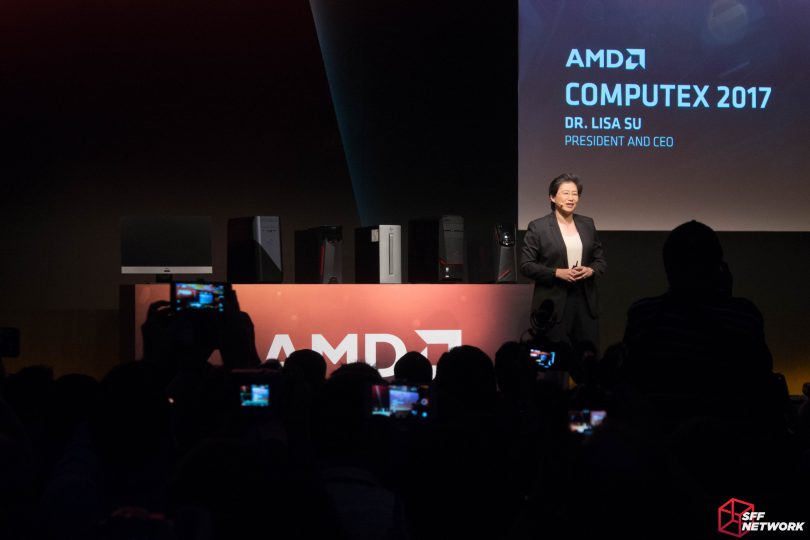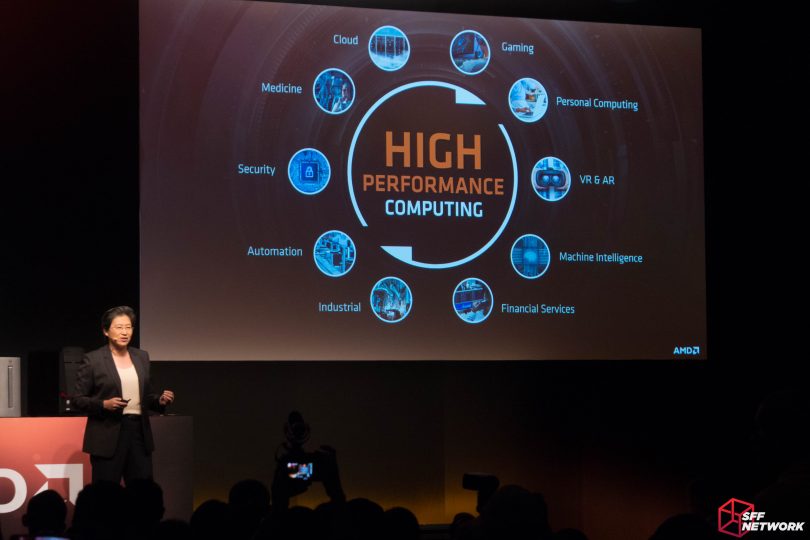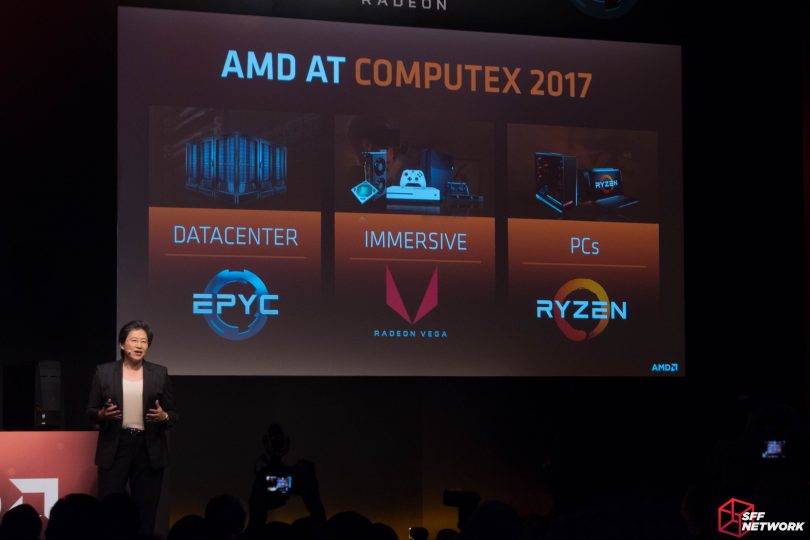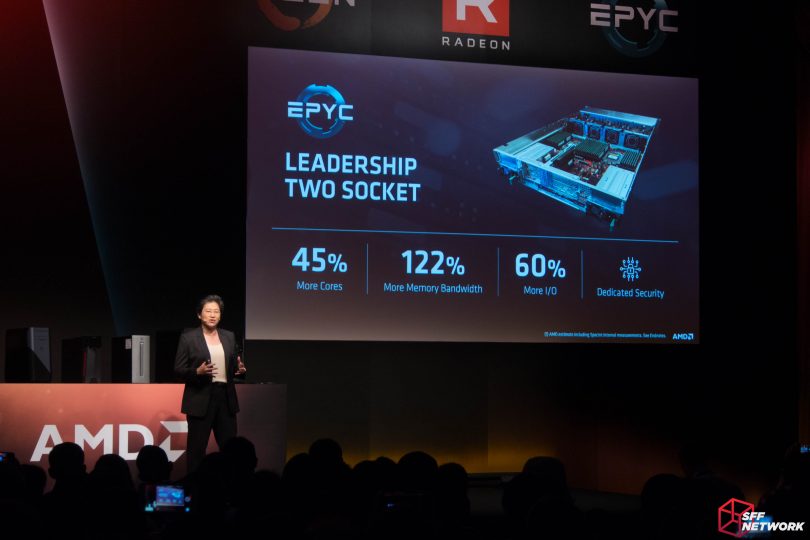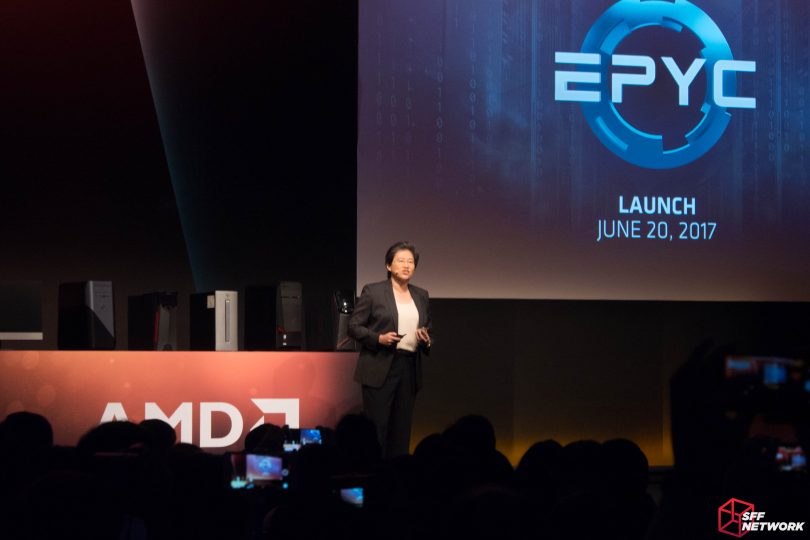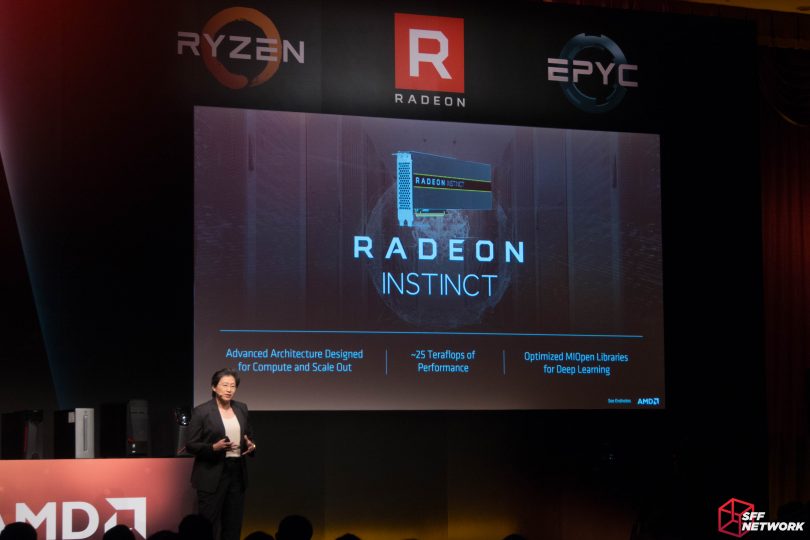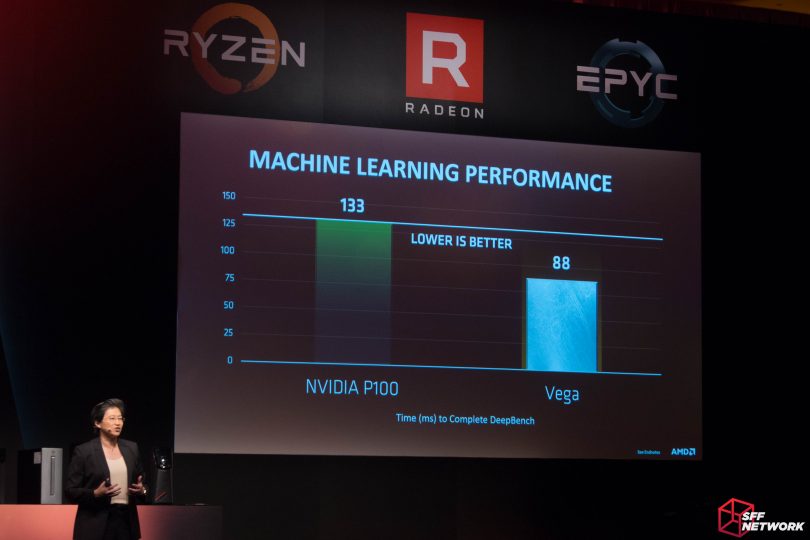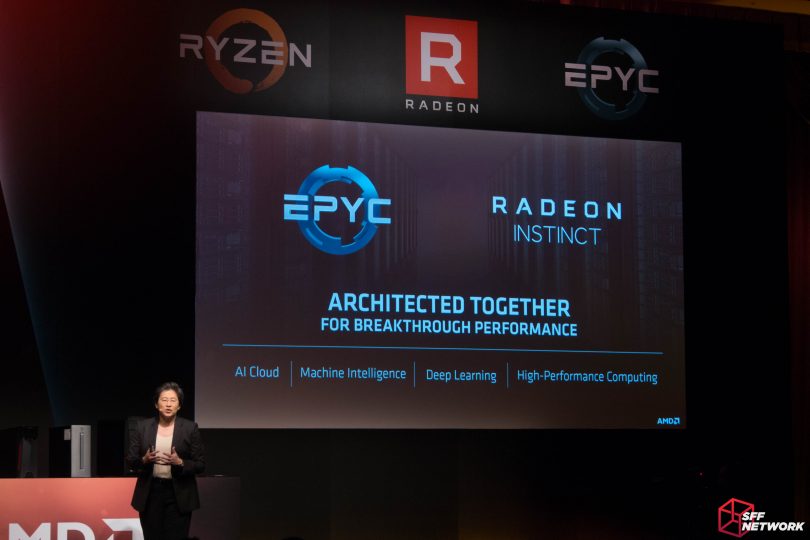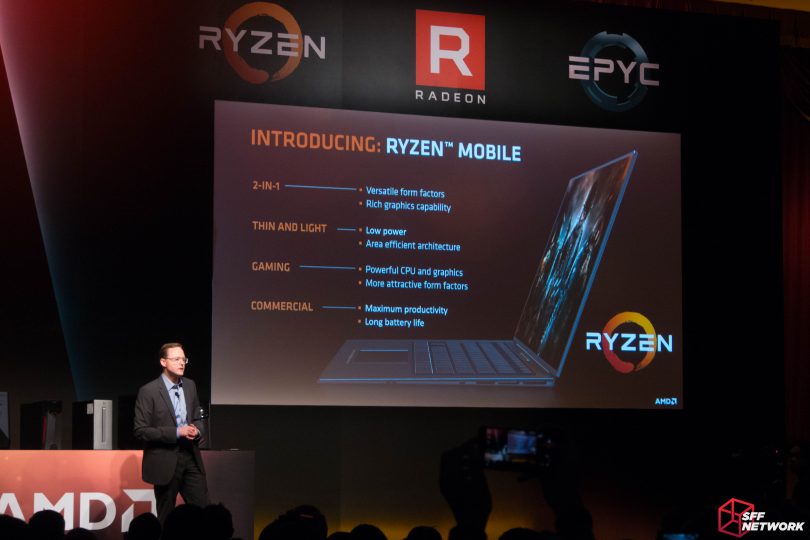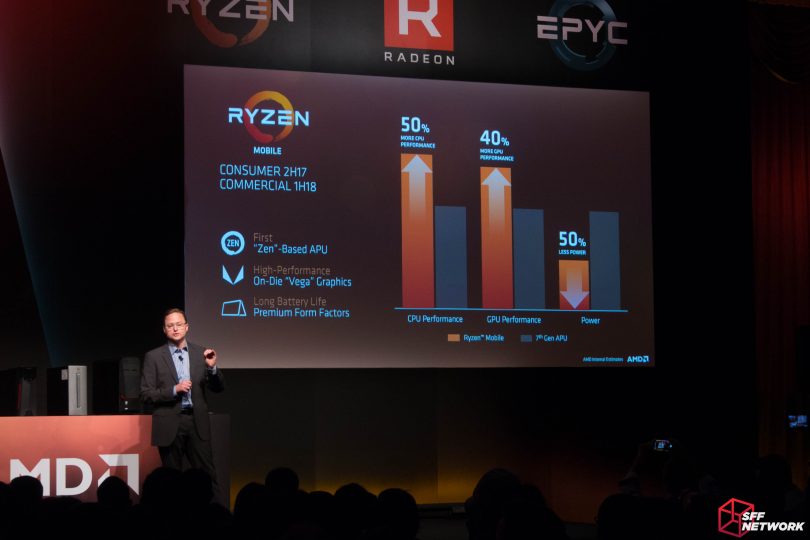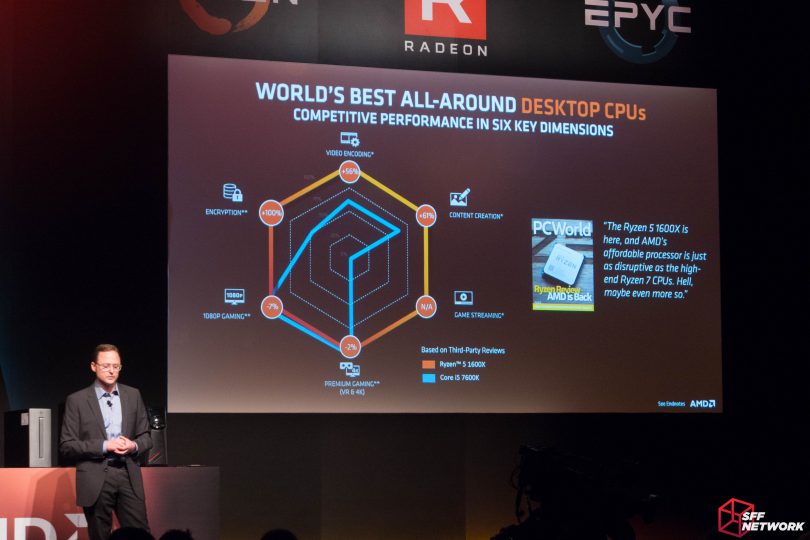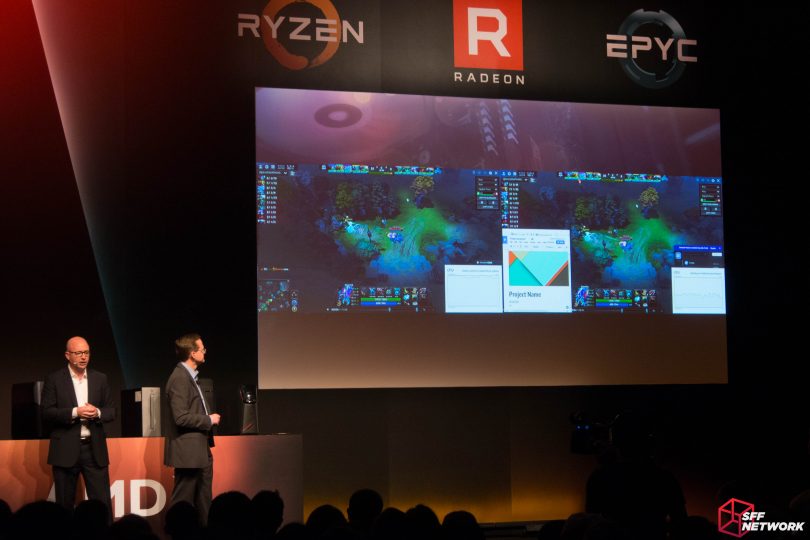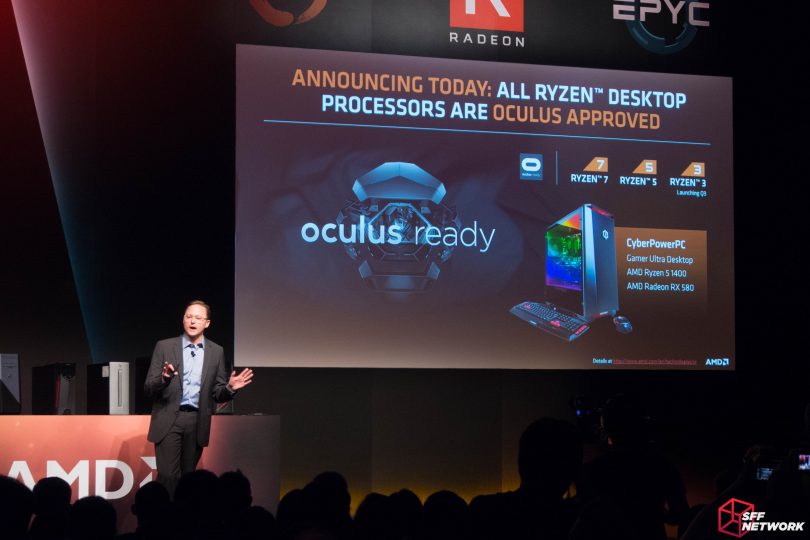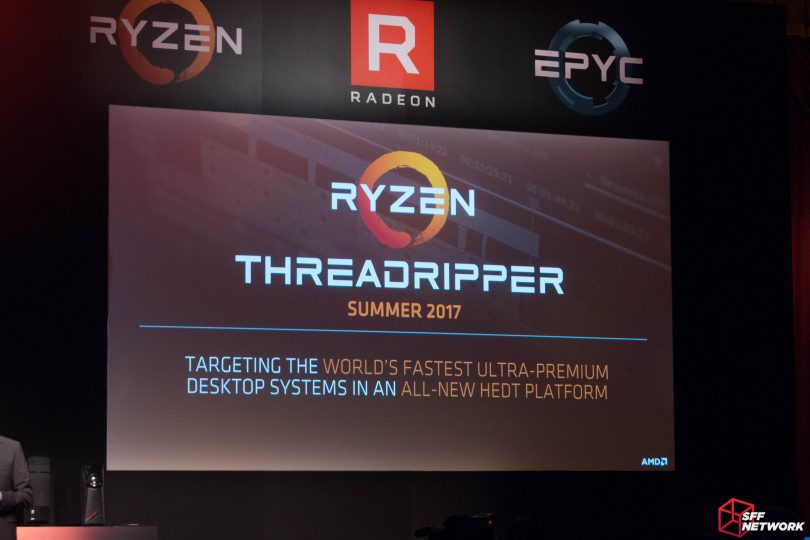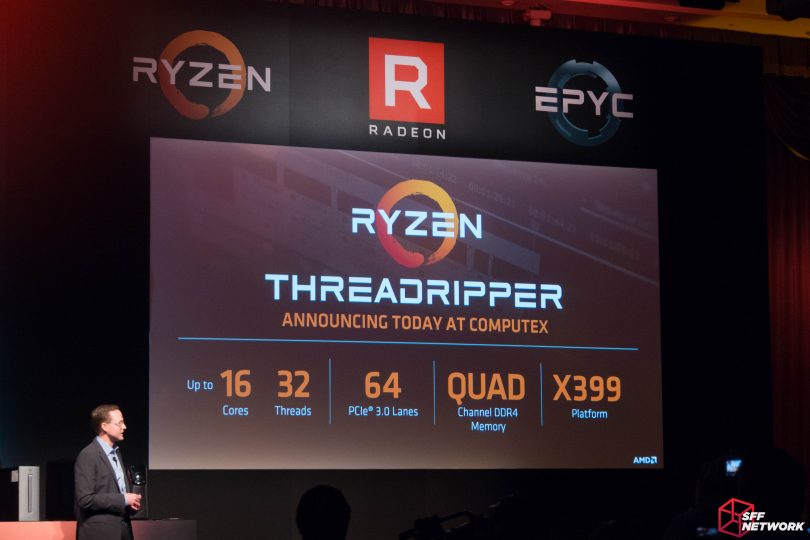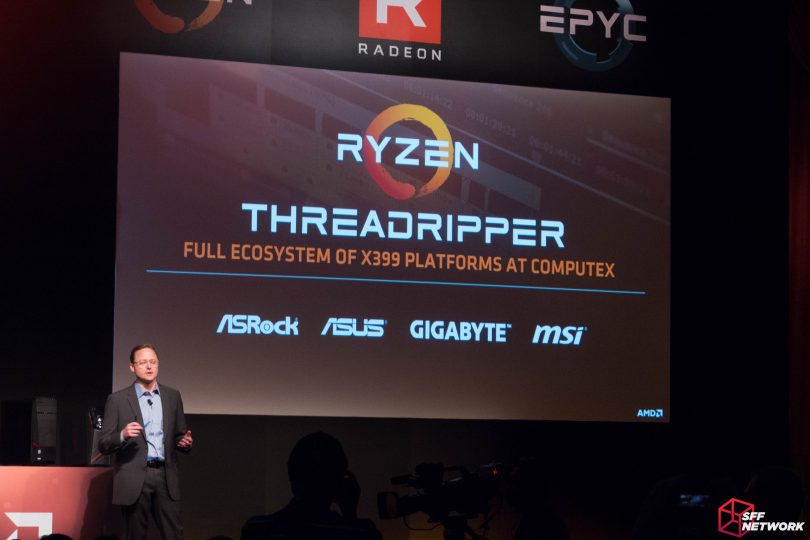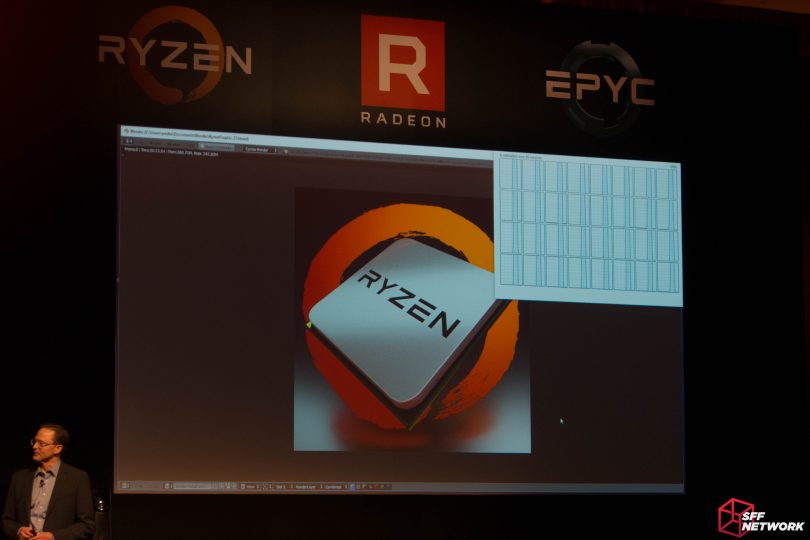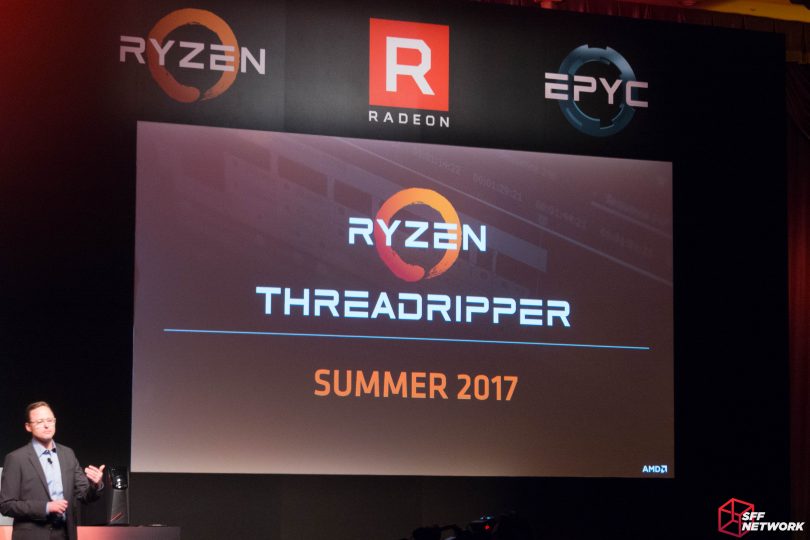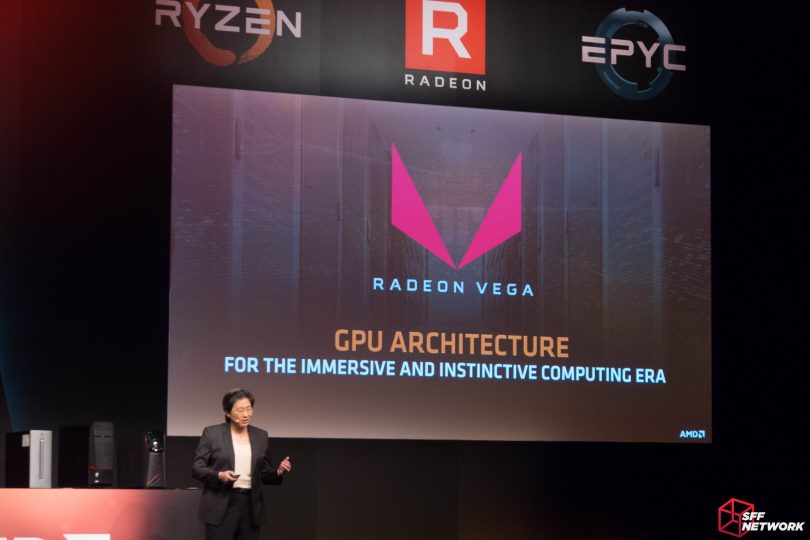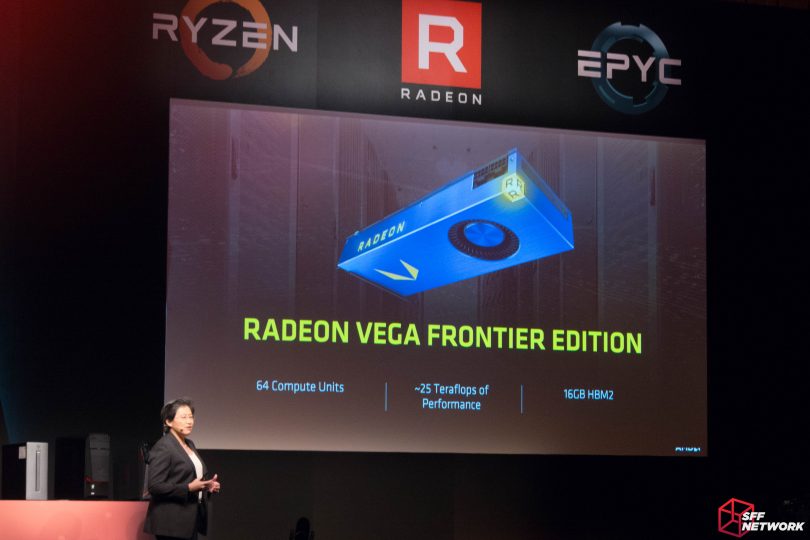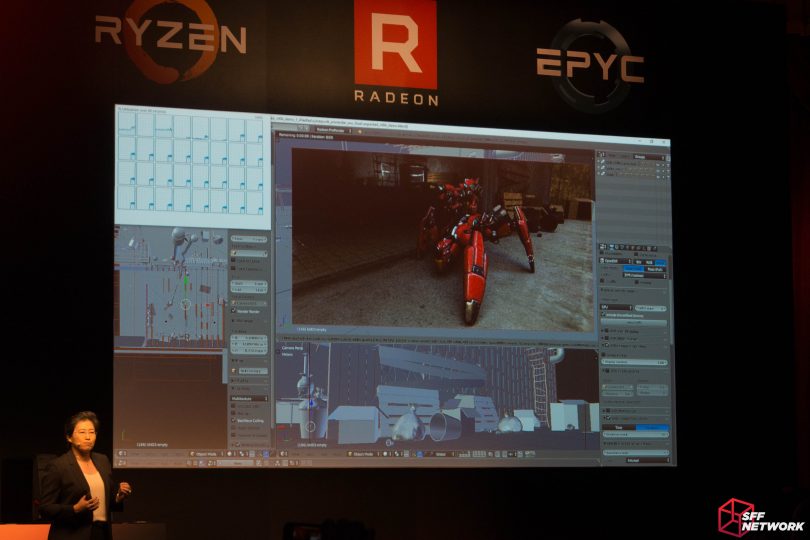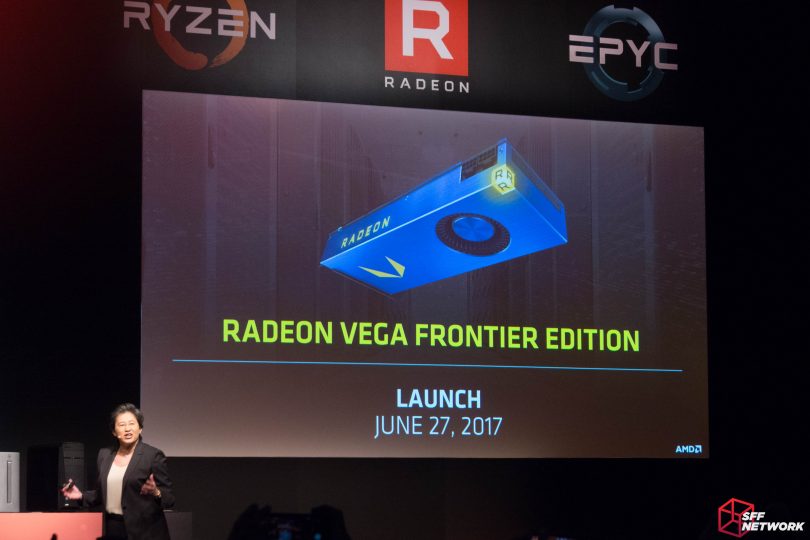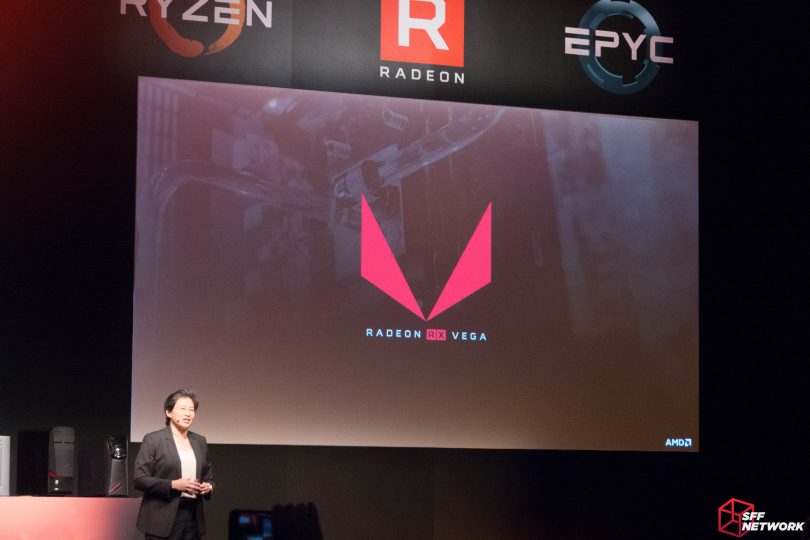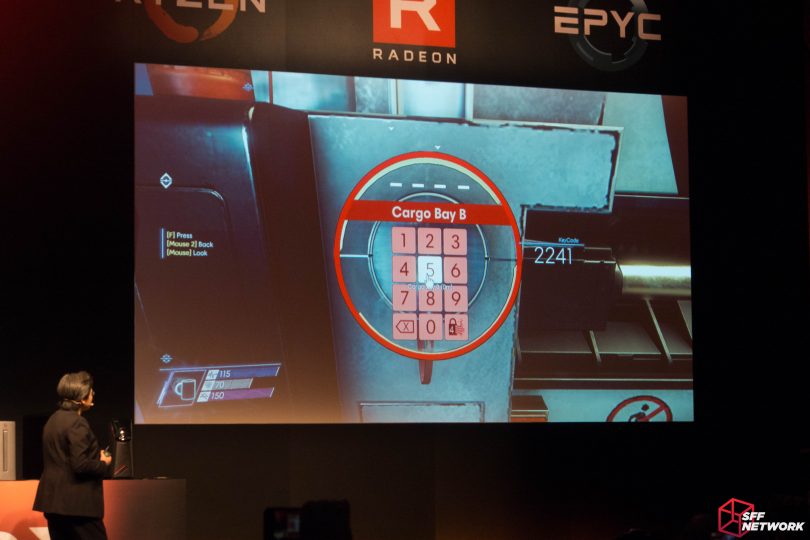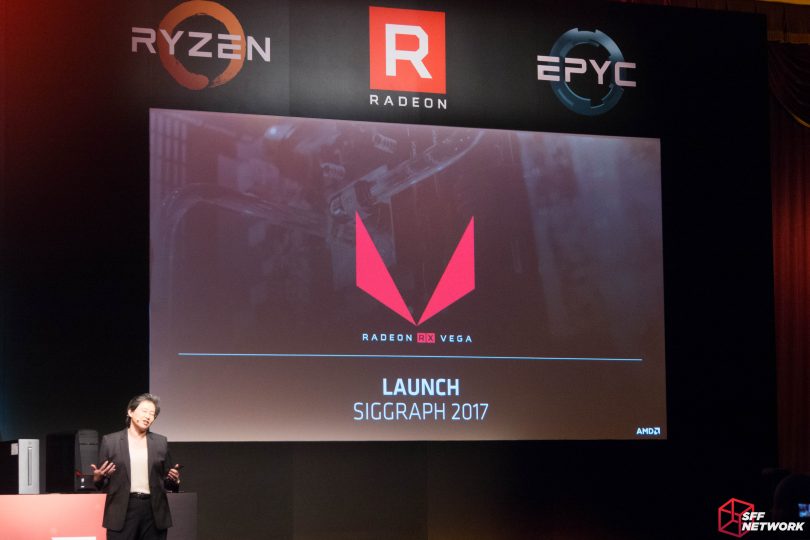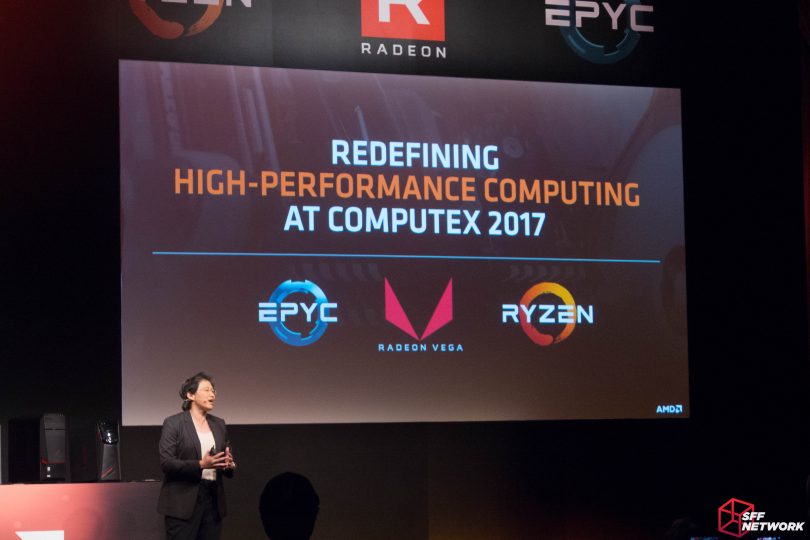For the first time, SFFN had direct access to an AMD press conference, instead of hoping that our feeble home internet connections (well, apart from myself with 100/30 fibre – take that, US-based staff!) could cope with streaming their live event. Joshua, Craig and I were on-location yesterday at the event, which was held at the Westin Taipei hotel in Taipei during Computex 2017.
Eagerly waiting for news on a Vega Nano, Ryzen APUs and ThreadRipper, we planted ourselves in the crowd and noted the following from Lisa Su (AMD’s CEO) and her team.
First up was a happy birthday of sorts – AMD has been in Taiwan for 30 years (as long as I’ve been alive!) as of this year, and the local AMD head thanked AMD worldwide, as well as the PC market, for their support.
Lisa quickly pivoted to an overview of AMD’s current strategy, which takes advantage of AMD being in the unique position of being the only company to have both powerful GPU and CPU products. There was some deliberate emphasis on heterogeneous workloads to this end, undoubtedly to sell viewers on AMD’s Epyc and Radeon platforms as whole solutions.
Speaking of which, AMD overall spent a fair amount of time focusing on the datacentre and commercial side of their business. Mentioning the impending Epyc launch – which they pegged at June 20th – we were shown a few benchmark results from the current iteration of the product, showing significant claimed performance wins over a comparable Intel platform, particularly when tiering both company’s offerings on price.
Also included in this section of the presentation was a preview of Vega’s datacenter cousin – the Radeon Instinct. This GPGPU product line adds to AMD’s server and compute offerings, uniting the complete solution mentioned earlier.
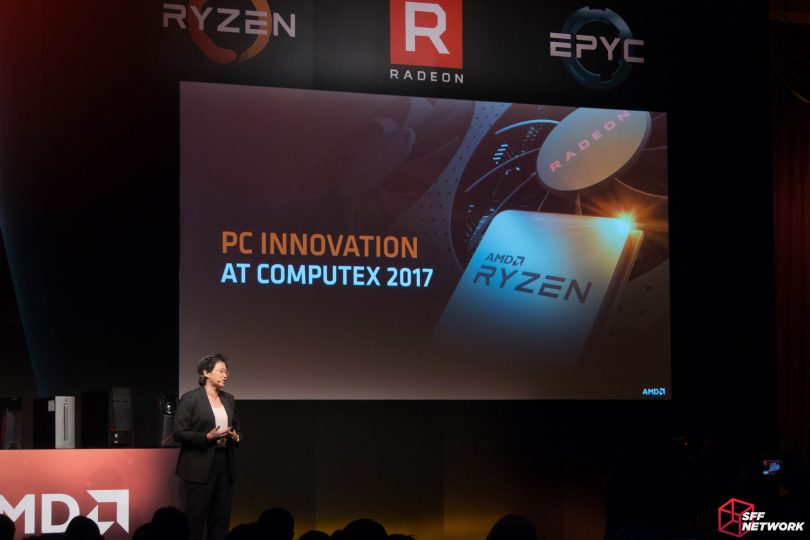
The focus then shifted back to desktops, and what followed can only be described as a PC love fest, with each participating OEM showing up on stage and declaring their love for PC (except ASUS ROG, who reversed it by saying that PC gamers love them). A little awkward bit of one-upmanship, yet still amusing.
As far as the meat of this section, though, AMD’s intent was to demonstrate that they had a high participation rate from OEM’s that represent a large cross-section of the market. Dell, ASUS, and Lenovo (among others) all have pre-builts ready to sell, and ASUS in particular announced an exclusive partnership with AMD whereby they brought a Ryzen 7 chip and Radeon RX580 graphics part to a notebook form factor.
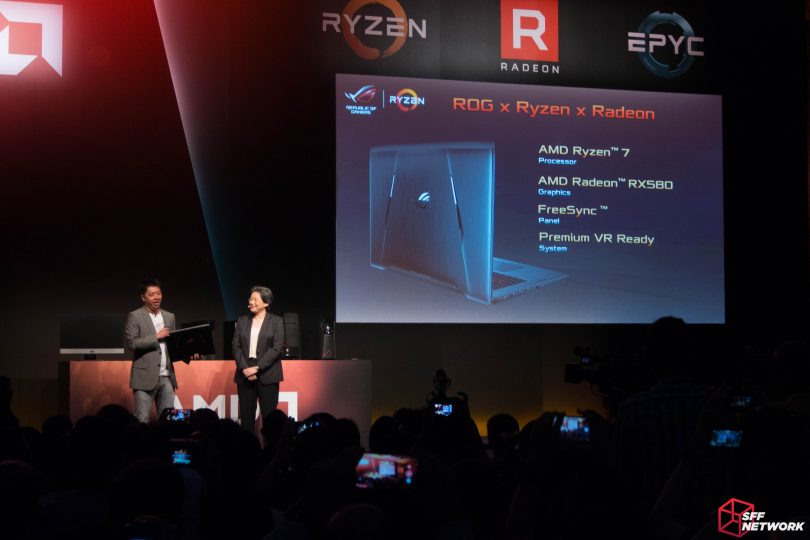

Speaking of which, we did have a glimpse into AMD’s new Ryzen Mobile – the first of the APUs with Vega (yes, Vega) integrated graphics. More benchmark results ensued, with an overall improvement of 50% in the CPU performance, 40% of the graphics performance and 50% less power than the previous generation AMD mobile APU. A thin multi-form-factor prototype laptop was briefly brought on stage to demonstrate how these improvements would translate into performant solutions in thin devices.
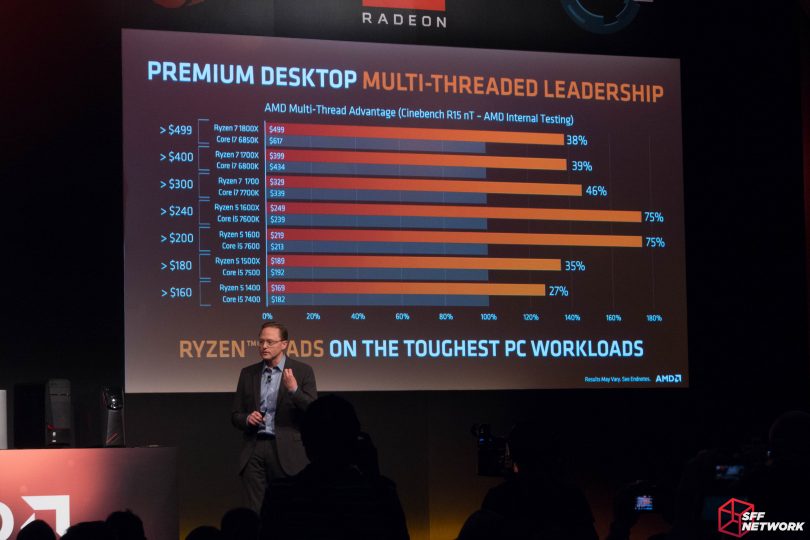
Finally, though, we can begin to get at least a taste of what’s to come for AMD’s desktop parts. And what better a place to start than ThreadRipper, of course!
ThreadRipper is AMD’s new HEDT platform, using the same SP3 socket as the above EPYC server processors. AMD took a few potshots at Intel here, noting that all ThreadRipper CPUs will have 64 PCIe 3.0 lanes, and quad channel memory – directly contrasting with Intel’s bifurcation of features for workstation parts. No artificial limitations here if you buy a lower end model!
Also interesting here was the Blender demonstration. At the time Ryzen was released, we saw a promotional image of a Ryzen CPU being rendered in Blender, resulting in a time of 36 seconds. AMD performed the exact same benchmark on the ThreadRipper platform, netting a result of 13.04 seconds! Thus, while ThreadRipper is purported to be two Ryzen CPUs on a single package, it appears that – in this particular test – AMD can get closer to 3x the performance out of the platform, versus their consumer orientated product.
Distressingly, we’re unsure of exact specifications of the ThreadRipper CPU demonstrated, given that AMD was tight-lipped about all else, so time will tell exactly how it sits in the CPU world. We were given a release date of Summer 2017, but little else.
Enough for processors, though – on to Vega!
AMD is following nVidia’s lead with having a reference board at launch – even using the same initials! This follows on from using the *300 series chipset monikers and R3/5/7/9 CPU names for the CPU and motherboard side. Intelligent marketing or childishness? We’ll leave that to you.
AMD then demonstrated the performance of a complete Vega and ThreadRipper system, using two Vega cards and the top-of-the-line ThreadRipper processor. Moving the ‘camera’ around this complex scene resulted in impressively fast renders of a challenging image – with reflections, shadows and textures abound. Without comprehensive parameters of the test, though, it’s hard to compare it directly to a comparable nVidia/Intel paired offering.
To tout Vega’s gaming chops, AMD relied on yet another demo, playing Prey at 4K resolution with dual Vega cards and another ThreadRipper CPU. Overall, the performance was smooth and admirable (albeit with some fairly noticeable tearing, perhaps introduced by the projection system and a disabled Vsync)… but again, without a comparable system from the competition, it’s difficult to judge how good it really is.
Still, we were awaiting concrete info on Vega with bated breath, and we were left… well, waiting. At the very least, AMD has finally committed to a launch date: Siggraph 2017, which begins at the end of July. Only then, it seems, will AMD finally spill the beans on the performance characteristics and price points that Vega will hit.
Thoughts? Leave them here, in the forum!

